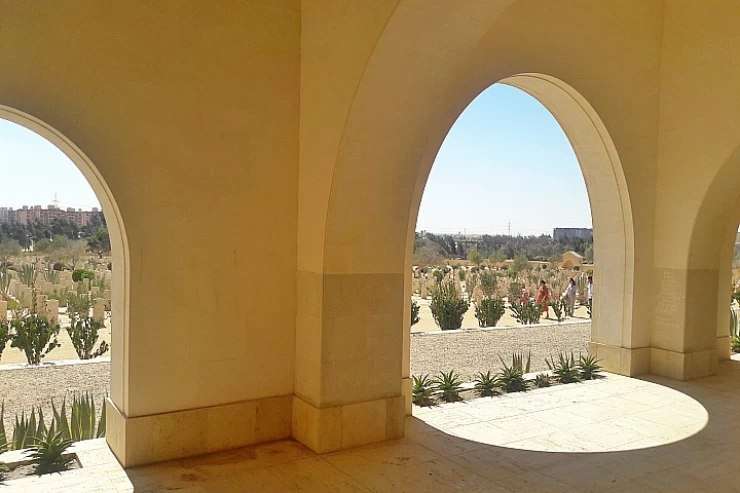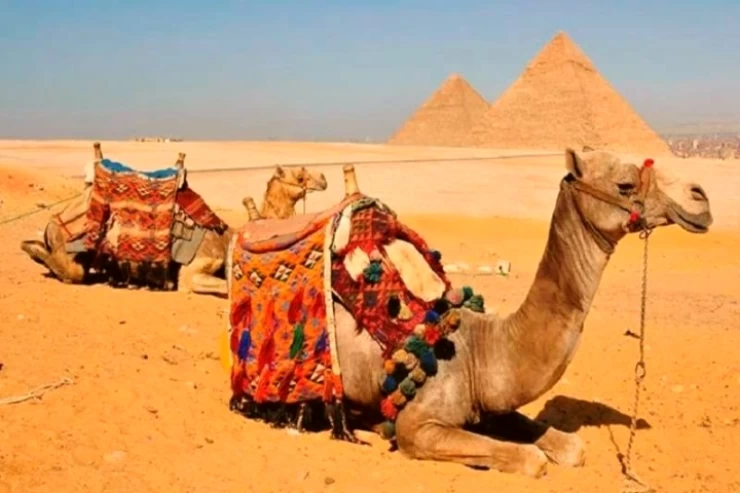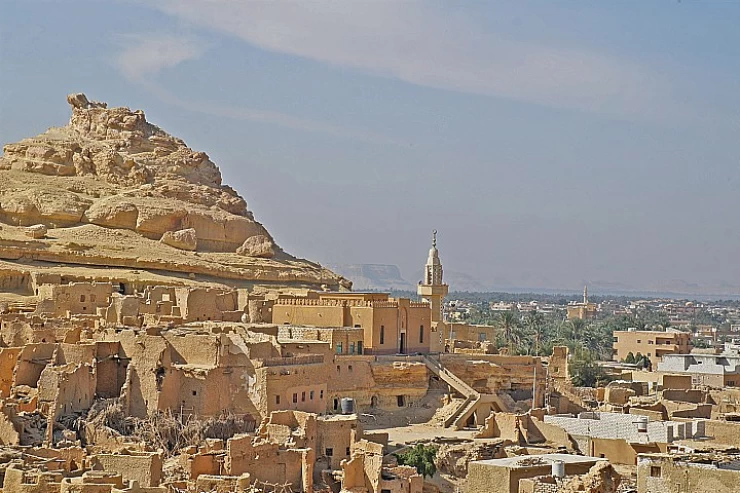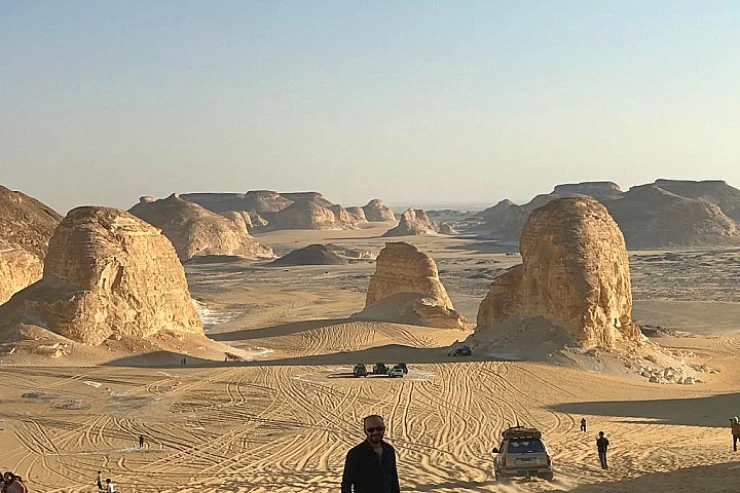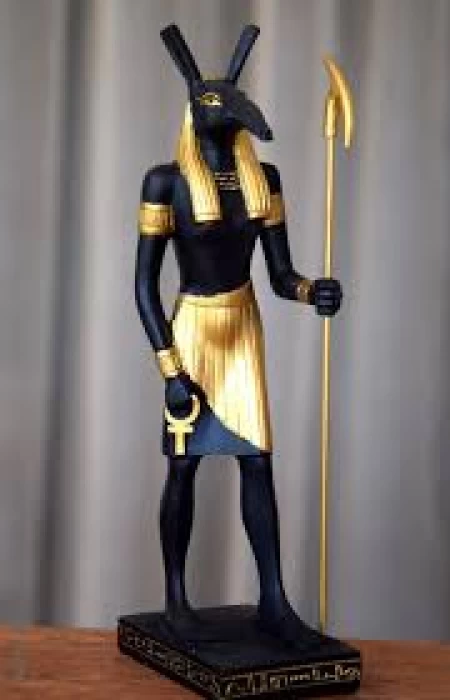
God Seth | Egyptian God of War
Seth: The Egyptian God of Chaos, Storms, and Transformation
The ancient Egyptian god Seth exists as one of their most complex divine beings because of his contradictory characteristics and yet chaotic association.
Seth, who functioned as the god of chaos along with storms, deserts, violence, and disorder, carried multiple functions within Egyptian mythology, theology, and cosmology. Seth remains a complicated figure after ancient times, when he received a persistent villainous portrayal. Apart from being a protector, Seth served as a crucial force of balance and a symbol of strength. The nature of Set worship underwent extensive transformation during millennia as Egypt underwent religious, political, and social transformations in its development.
Origins and Iconography
The historical origins of Seth extend into the first time periods of ancient Egyptian antiquity. Historical documents indicate that people began worshipping Seth before 3100 BCE during the time of the Predynastic Period. At first people revered this deity with local power status in Upper Egypt while he gained prominence by establishing sanctuaries at Ombos (Naqada) and during the Hyksos dominance of Avaris.
Egyptologists refer to the uncertain feline-shaped head of Seth as the "Set animal" or "Typhonic beast" when observing his anthropomorphic body in ancient artwork.
Seth appears as a hybrid animal figure with an elongated snout shaped like a curved line, while showing rectangular ear shapes and a dog-like form, and ending in a forked tail. For a prolonged time, scholars have tried to identify the nature of this mysterious creature, even though experts cannot match it to any recognized animal species. His elusive image makes Seth function as an ambiguous cosmological force that bridges between different states.
Seth was related to the red colour, which symbolized desert territory alongside fire elements plus chaos forces, yet his identity stood opposed to the black land fertility represented by the Nile Valley soil. The red desert area of land and the black Kemet area formed fundamental elements of Egypt's symbolic landscape, along with defining the powers of Seth.
The Myth of Osiris and Seth
Seth gained fame through his part in the Osirian myth cycle, which serves as the basis for ancient Egyptian religious beliefs. Seth stands as the third child among his siblings, who include Osiris, Isis, and Nephthys. The people adore Osiris both because he leads intelligently and because he is the god of fertility, agriculture, and kingship. Seth watches with jealousy as his brother maintains greater fame and power, so he devises a murder plan.
Seth manipulates Osiris into placing himself inside a magnificent coffin, while Seth proceeds to seal and discard it into the Nile. Osiris's body binds with a sacred tree after his coffin reaches Byblos. Isis, the wife and sister of Osiris, dedicates herself to an extended search that will lead her through many arduous steps to recover his body. Using the support of Nephthys and Anubis together with her magical powers, Isis manages to retrieve Osiris from beyond the grave and return him to Egypt.
Seth discovers the body and splits it into fourteen pieces before he scatters the pieces throughout Egypt.
With magical powers, Isis resurrects Osiris only long enough for conception to happen, which results in their son Horus. Osiris claims rulership of the underworld, followed by Horus becoming an adult to claim the position of the Egyptian throne from Seth.
Seth and Horus bring down their epic struggle for the throne through continuous warfare that involves religious deceit and heavenly involvement. Different versions state that the conflict continues for eighty entire years. Due to his victory, the ancient Egyptians named him as their king, which served to signify the victorious restoration of order over chaos. Seth exists in the desert or obtains a place in the pantheon with diminished divine rank.
The Dual Nature of Seth
Few later texts vilify Seth, yet earlier written versions reveal a more complex character than the one commonly associated with the deity. Seth worked as a vital force for balance against divine order while carrying some evil aspects within him. The ancient Egyptian understanding of chaos rejected its portrayal as simply destructive because it considered chaos as an essential component of everything, which humans needed to regulate but never to eliminate.
In his role as solar barque defender, Seth demonstrates traits related to his protective aspects. When Ra travels through the underworld during nighttime, he faces an assault by the chaotic serpent known as Apophis (Apep). Seth positions himself at the front of the boat to fight the serpent while he protects the sunrise from occurring. Throughout each night, Seth stands as the vital force that helps preserve the cosmic stability between different realms.
The complex nature of Seth produces an unexpected persona, which reveals him as both a destructive force and a life-giving element in this situation. Seth represents the aspects of strength that manifest along with power and unpredictability while maintaining destructive characteristics that protect cosmic stability. The leaders of Egypt sometimes chose to connect with Seth during the 19th Dynasty to acquire his powerful characteristics. The name Seth appeared in the royal lineage of Seti I and Setnakhte as these Pharaohs wanted to highlight his favourable characteristics.
Worship and Cult Centers
Numerous Egyptian religious centres worshipped Seth, while the primary worship sites resided at Ombos and then moved to Avaris, where the Hyksos exerted their leadership from. The Asiatic Hyksos heritage possibly attracted them to Seth because he embodied desert-based power along with foreign militancy. During their control of Egypt from about 1650 BCE to 1550 BCE, the status of Seth increased substantially to the point where he received multiple comparisons to foreign storm deities, including Baal and Hadad.
After the Hyksos were exiled from Egypt, the native rulers attempted to restore Amun and Osiris as the leading divine forces of the country. The negative perception of Seth started developing at this point. His relationships with foreign peoples, together with the element of storms and disorganization, transformed him into a hostile entity over time. During the New Kingdom period (c. 1550–1070 BCE), his cult lost popularity throughout numerous regions, yet he continued to exist in the structure of divine powers.
During the time of Greco-Roman religious influence and in subsequent texts, Seth experienced diminishing popularity until his representation became entirely demonical and mirroring the Greek entity Typhon. The inscriptions exposed to public view displayed the deletion or modification of his name as proof of his descent from a powerful status.
Symbolism and Legacy
The significance of Seth remains perpetual because he symbolizes multiple complex meanings within the Egyptian religious beliefs. Seth embodies the dual forces that push against each other between structure and breakdown as well as existence and death along with creation and destruction. An essential distinction of Seth lies in that other mythologies banished their evil figures, but the Egyptians included him in their mythology instead. The universe acknowledged Seth through its larger cosmic framework by establishing him as a crucial yet risky factor that characterizes existence.
However, numerous identifications of Seth exist in modern scholarship. Different observers portray him as either a pitiable creature who suffered misperception or as a manifestation of human darkness that needs acknowledgment and internal integration. The Temple of Set adopts a contemporary interpretation of Seth, which signifies personal transformation and empowerment in modern esoteric and occult rituals.
Set was the ancient Egyptian god of the desert and storms, and in later mythology, he was also the god of darkness and chaos. Set is depicted as a usurper who killed and mutilated his brother Osiris.
Seth is known for the rivalry he had against his brother Osiris. As the myth goes, Seth became jealous of the rule of Osiris over Egypt and planned to dethrone him. He deceived Osiris and trapped him in a chest, throwing him into the Nile. Afterward, he mutilated the body of Osiris into small bits and scattered it all over Egypt. This is what led to the continuous enmity between Seth and Horus, the son of Osiris.
The myth of the battle between Seth and Horus is perhaps the most essential myth of Egyptian mythology. The deities had several savage competitions among themselves to enjoy the privilege of ruling Egypt. Finally, Horus emerged as the victor by showing order triumphing over chaos, but not fully, because he continued to rule over the deserts and receive shrines heard by the desert warriors and wayfarers.
Though a god of chaos, Seth was also venerated in some places in Egypt. He was particularly venerated in the northeastern Delta region, and one of his principal cult cities was Avaris. The Hyksos, a foreign dynasty that ruled Egypt during the Second Intermediate Period (c. 1650-1550 BCE), identified Seth with their storm gods and made him a protective deity.
When pharaohs were honoring Seth, he was mostly associated with the military might of the country, such as in the case of Seti I and Ramses II of the Nineteenth Dynasty, as it was with regard to the use of Seth as a safeguard against enemies. Militaristic strength made Seth another important figure during the reign of the Egyptian rulers, giving those with divine protection legitimacy.
Set» is one of the ancient Egyptian gods. He is the god of storms and violence and is called «Set Nabti», meaning «Set, who belongs to the city of Nobet». He is the god of evil in ancient Egypt, where he killed his brother. However, Set played a good role, as he was known as the protector and the destroyer as well, as it is a complex combination. With Horus, he defends the king's name in the fern.
Egotistical and destructive yet completely necessary, Seth had an essential role in Egyptian mythology; like disorder, he was a necessary part of the cosmic balance, an order against which he is the embodiment of that struggle. Seth in different inter-
Seth (Set, Sutekh, or Setesh) is Egyptian mythology's most complicated and controversial deity. He had been a god of war, chaos, and storms, and of the desert, a powerful yet unpredictable force. Though he bore negative connotations, Seth was a vital and protective power in the universe's balance and was revered in some parts of ancient Egypt.
From the earliest parts of Egyptian mythology, Seth is usually derived. He was often portrayed as a most mysterious creature called the Seth animal, an archaic deity with an elongated curved snout, square ears, and a forked tail. Some interpretations have viewed this hybrid form as a reflection of his chaotic nature, such that he could not easily identify himself or the animal kingdom of the real world.
In the Egyptian arts, Seth was also shown as a strong warrior with huge scepters signifying further arguments over Africa and storms. His reddish skin was sometimes interpreted as suited to the dry and unfruitful lands, such as the deserts of Egypt, in contrast to the most fertile black soils of Egypt's Nile Valley.
According to an ancient belief, God Seth was the son of Geb and Nut, his wife was the sister of Nephthys.
However, none of the unions with the many possessed women has been useful and this was probably related to the sterility of the deserts over which Seth's power extended.
The body of this animal had fur bunches that were formed like inverted arrows. In his hands was a long staff that had the head of a Seth animal on top and was forked at the bottom. Seth is depicted holding an ankh sign (key of life) in one hand and a staff in another. He is associated with the pig, the donkey, and the crocodile. He was also associated with some poisonous creatures like scorpions, and snakes, and sometimes as a hippopotamus.
Seth and Horus were the two deities that symbolized Egypt in the two ethnic components. All the Asian populations that settled in Egypt, starting with the Hyksos, had their main divinity in Seth.
Originally Seth was worshiped as a local god in the fifth and eleventh districts of Upper Egypt; in prehistoric times, he was the god of all of Upper Egypt. The cult of Seth was introduced under the reign of King Peribsen in the 2nd Dynasty, in the eastern Delta region, this king was even called Seth-Peribsen. Beginning in the Heliopolitan era, the kings who ruled Egypt from north to south were "Servants of Horus", therefore enemies of Seth.
He was also known by Egyptians as the god of war and storms and was linked with the planet Mercury and the color red. The people thus hated people with red skin and even killed animals having red fur because they thought they were related to Seth, Osiris’s younger brother, who grew jealous of him and murdered him. After killing Osiris, Seth dismembered Osiris’s body, and he scattered the pieces of his body over the face of the earth.







